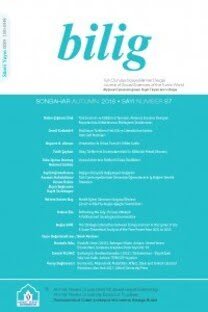Nestor İskender ve İstanbul’un Türkler Tarafından Alınış Hikâyesi
Bizans İmparatoru I. Konstantin’in ilk Hristiyan başkenti yaptığı ve Ortodoksluğun merkezi haline getirdiği İstanbul’un II. Mehmet tarafından fethedilmesi yeni bir çağı başlatacak kadar büyük bir dönüm noktası olmuştur. Fethin görgü tanıklarından Nestor İskender tarafından XV. yüzyılda yazıldığı düşünülen “Çar Şehrinin Öyküsü” adlı el yazması, Rus bilim dünyasında büyük ilgi uyandırmıştır. İstanbul’un fethiyle ilgili en eski Rusça eser olarak kabul edilen bu el yazmasında, tarihi gerçeklerle hayal gücü iç içe geçmiştir. İstanbul’un Hristiyanlığın merkeziyken Müslüman Türklerin eline geçmesiyle bir çeşit hayal kırıklığına uğrayan yazar, eserinde İstanbul’un kuruluşuyla ve kaderiyle ilgili efsanelere ve kehanetlere yer verirken, esas konuyu savaş sahnelerine ayırmıştır. Özellikle II. Mehmet’e ve Türklere karşı taraflı tutumunu açıkça ve sıklıkla dile getiren Nestor İskender, geçmişte bu şehir hakkındaki tüm kehanet ve efsanelerin gerçekleştiğini, dolayısıyla bundan sonraki kehanet olan İstanbul’un bir gün mutlaka Rusların eline geçeceği konusundaki istek ve dileğiyle eserini bitirmiştir
Anahtar Kelimeler:
İstanbul, fetih, II. Mehmet, Nestor İskender, kehanet
Alexander Nestor and the Story of the Conquest of Istanbul by the Turks
Sultan Mehmet II’s conquest of Istanbul, which was previously made the capital city of the Christians and Orthodoxy by Byzantine Emperor Constantine I, is a turning point for the beginning of a new era. One of the witnesses of the conquest, Alexander Nestor, wrote a manuscript in the 15th century known as “The Story of the Tsargrad”, which had an effect in the world of science in Russia. In this manuscript known as the oldest Russian work on the subject, the writer uses both historical realities and his imagination. It is a disappointment for the writer when Istanbul, the Center of Christianity, falls to the hands of the Turks. The writer writes both about the legends and predictions concerning the foundation and destiny of the city. The war scenes, on the other hand, make up the main theme of the work. In this manuscript Alexander Nestor also says a lot about the attitudes to Mehmet II and the Turks and points out that all the predictions and legends about the city have come true. At the end of his study, he expresses his wish that the prophecy about the city belonging to the Russians will come true one day.
Keywords:
Istanbul, conquest, Mehmet II, Alexander Nestor, predictions,
___
- Arşimandrit, Leonid (1886). Povest o Tsargrade Nestora İskandera. Po rukopisi Troitse-Sergiyevo lavrı naç. XVI. veka, No: 773. S.Peterburg.
- Azbelev, S. N. (1961). K datirovke russkoy povesti o vzyatii Tsargrada turkami. (otv. red. N. A. Kazakova). Trudı otdela drevnerusskoy literaturı, İnstitut russkoy literaturı. T. 17. Moskva-Leningrad: İzdatelstvo akademiya nauk SSSR.
- Dabağyan, L. P. (2005). Paylaşılamayan Belde Konstantiniyye. İstanbul: IQ Kültür Sanat Yay.
- Emecen, F. (2012). Fetih ve Kıyamet. İstanbul: Timaş Yay.
- Jones, J. R. M. (2012). 1453 Kuşatması – Yedi Çağdaş Rivayet -. Çev. Cengiz Tomar. İstanbul: Yeditepe Yay.
- Hacıyev, İ. (2009). “Nestor İskender’in İstanbul’un (Tsargrad) 1453 Yılında Türkler Tarafından Fethinin Hikâyesi Eseri”. 7. Uluslararası Türk Kültürü Kongresi, 5-10 Ekim 2009, Bildiriler I. Ankara: Atatürk Kültür Merkezi Yay.
- İnanır, E. (2012). Rusların Gözüyle İstanbul. İstanbul: Kitabevi.
- Kritovulos (2012). Fetih 1453. Ankara: Panama Yay.
- Kurat, A. N. (1999). Rusya Tarihi (Başlangıçtan 1917’ye Kadar). Ankara: Türk Tarih Kurumu Yay.
- Lauşkin, A. V. (1995). Nestor İskander i russkaya ‘povest’ o vzyatii Konstantinopolya turkami. Trudı nauçnogo seminara ‘traditsii russkoy istoriçeskoy mısli’. İnstitut spetsialnıh istoriçeskih distsiplin rossiyskoy istorii. Moskva: Akademiya yestyestvennıh nauk RF.
- Lihaçev, D. S. (1980). İstoriya russkoy literaturı. Leningrad: Nauka.
- Lurye, Y. S. (1960). O vozniknovenii teorii “Moskva-tretiy Rim”. (otv. red. D. S. Lihaçev). Trudı otdela drevnerusskoy literaturı, İnstitut russkoy literaturı. T. 16. Moskva-Leningrad: İzdatelstvo akademiya nauk SSSR.
- Mamayev, K. K. (1966).‘Videniye Tsargradskoye’ v ‘povesti o Tsargrade’ Nestora İskandera i ego interpretatsiya v nekotorıh pamyatnikah prikladnogo iskusstva. Trudı otdela drevnerusskoy literaturı instituta russkoy literaturı. T. 22. Moskva-Leningrad.
- Necipoğlu, N. (2012). İstanbul Fethi Arifesinde Bizans Başkentine İçeriden Bakış: Bizans ve Batı Kaynaklarına Göre Konstantinopolis (1439- 1453). Tüm Yönleriyle Fetih ve Fatih. İstanbul: Timaş Yay.
- Nicol, D. M. (1992). The Immortal Emperor, The Life And Legend Of Constantine Palaiologos, Last Emperor Of The Romans. Cambridge: Cambridge University Press.
- Ortaylı, İ. (1996). İstanbul’un Fethi ve Üçüncü Roma Nazariyesi. I. Uluslararası İstanbul’un Fethi Sempozyumu, 24-25 Mayıs 1996. İstanbul Büyükşehir Belediyesi Kültür İşleri Daire Başkanlığı Yay.
- Skripil, M. O. (1954). ‘İstoriya’ o vzyatii Tsargrada turkami Nestora İskandera. Trudı otdela drevnerusskoy literaturı instituta russkoy literaturı. T. 10. Moskva-Leningrad.
- Smirnov, N. A. (1953). İstoriçeskoye znaçeniye russkoy “povesti” Nestora İskandera o vzyatii turkami Konstantinopolya v 1453 g. Vizantiyskiy vremennik. No: 7. Leningrad-Moskva: Akademiya nauk SSSR.
- Speranskiy, M. N. (1954). Povesti i skazaniya o vzyatii Tsargrada turkami (1453) v russkoy pismennosti XVI-XVII vekov. Trudı otdela drevnerusskoy literaturı instituta russkoy literaturı. T. 10. Moskva-Leningrad.
- Tansel, S. (1971). Osmanlı Kaynaklarına Göre Fatih Sultan Mehmed’in Siyasi ve Askeri Faaliyeti. İstanbul: Milli Eğitim Bakanlığı Yay.
- Trofimova, N. V. (2005). Tsitirovaniye bibleyskih tekstov v povesti Nestora-İskandera o vzyatii Tsargrada turkami v 1453 g. XV. Yejegodnaya bogoslovskaya konferentsiya. www.pstgu.ru/ download/1236686695. trofimova.pdf (Erişim Tarihi: 10.04.2013).
- Tvorogov, O. V. (1999). Biblioteka literaturı drevney Rusi. Vtoraya polovina XV. veka, Povest o vzyatii Tsargrada turkami v 1453 godu (podgot. teksta, perevod, komment.). Pod. Red. D. S. Lihaçev, L. A. Dmitriyev, A. A. Alekseyev. Sankt-Peterburg: Nauka.
- ISSN: 1301-0549
- Yayın Aralığı: Yılda 4 Sayı
- Başlangıç: 1996
- Yayıncı: Ahmet Yesevi Üniversitesi
Sayıdaki Diğer Makaleler
11.Yüzyılda Hangi Oğuz Diyalektleri Vardı?
Kuzey Kafkasya’nın Uluslararası Lideri: Sefer Zaniko
Demokrat Partinin Ekonomi Politikası: Kuram ve Uygulamanın İkircikli Yapısı
XX. Yüzyılın İlk Döneminde Almanya’nın Dış Politik Stratejisinde Türkistan
Tarih, Kimlik ve Dış Politika: Rusya Federasyonu Güncel Tarih Ders Kitaplarında Osmanlı-Türk İmajı
Doğu Emekçileri Komünist Üniversitesi ve Burada Okuyan Türk Öğrenciler Hakkında Bir Rapor
1916 Türkistan İsyanı’nın Kırgız Edebiyatına Yansıması: Ürkün
Nestor İskender ve İstanbul’un Türkler Tarafından Alınış Hikâyesi
